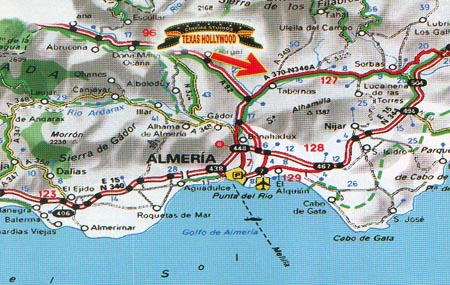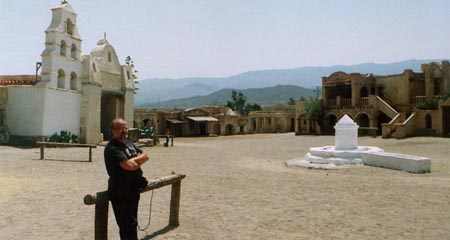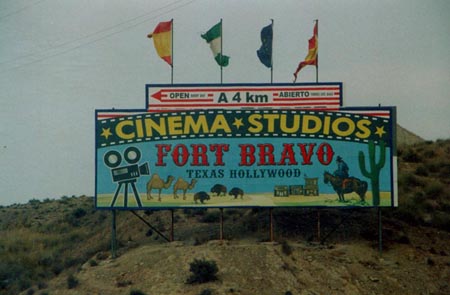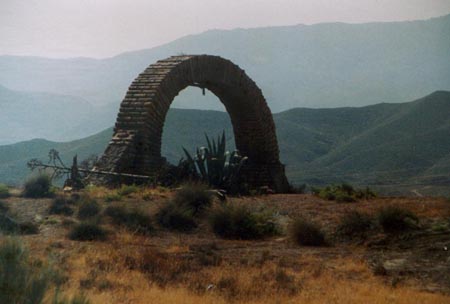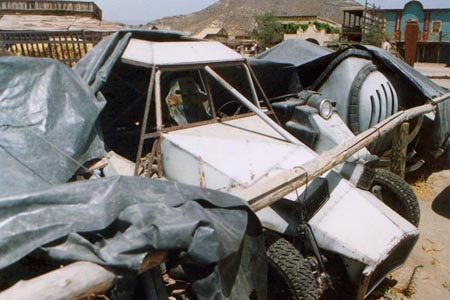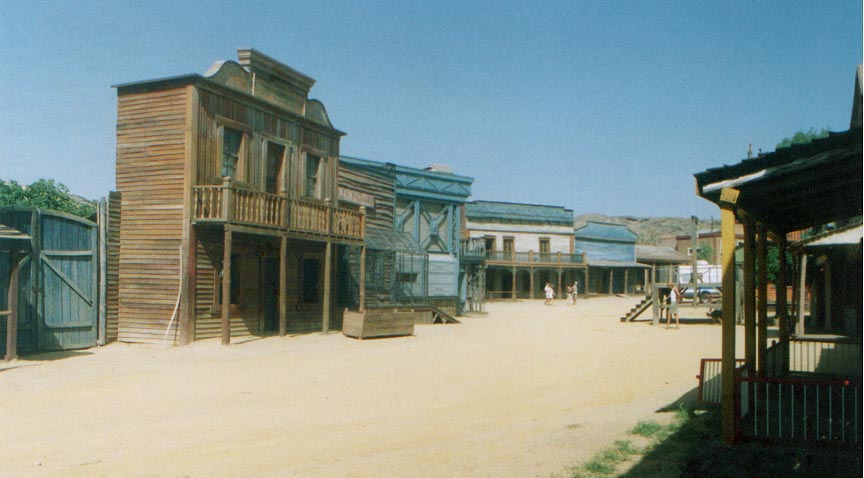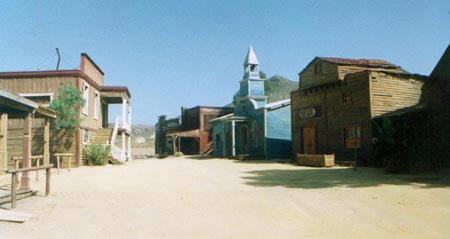 |
 |
|
Visiting Where the Spaghetti Westerns Were Created By Jim Knusch/Professor Kinema
To anyone who remembers what was playing in movie theaters in the late 60s and early 70s, westerns were in. Sure, there are those of us who grew up enjoying the adventures of The Lone Ranger, Gunsmoke and Bonanza on TV as well as the films of auteurs like John Ford, Howard Hawks and Sam Peckinpah. The good guys and the bad guys were always clearly identified…and it was the good guys who likewise always won in the end. True violence was kept to a minimum. In post WWII Europe these American westerns had grown in popularity, enough for European directors to produce their own. One of these enthusiastic European directors was an Italian, Sergio Leone.
With the releases of A Fistful of Dollars, For a Few Dollars More and The Good, the Bad and the Ugly, westerns had an entirely new look (and sound as well). The ‘hero’ was now a good/bad guy, personified by American actor Clint Eastwood. These western films were subsequently christened ‘Spaghetti Westerns,’ in turn creating a whole new sub genre of the Cinema. Vast gritty locations of hot and arid desert was intercut with extreme close ups of equally gritty faces. The soundtracks were punctuated by gunshots never before heard on the big screen. All of this was an amalgam of American stars, Italian production talent and Spanish locations. But ‘Spaghetti Westerns?’ For a brief instant, this would conjure images of cowboys eating (as well as fighting with?) bowls of pasta. At worst, maybe the screen would assault our senses with gunshots wounds to the stomach looking something like, er, never mind. Yet since the artistic control as well as the production funding came from Italy, the term ‘Spaghetti Western’ prevailed.
These locations in the Almiera section of Southern Spain are tourist attractions. The terrain is a flat desert (called Tabernas) in some areas as well as hilly in others. All are covered with varieties of desert fauna – like cactus - and reek of the badlands of Texas, New Mexico, Arizona and South of the (American) border. Three western towns were constructed in strategic spots, making maximum use of the surrounding terrain. No matter where the camera was set up, all the crew had to do was choose a different angle and it could appear to be a different town. This is evident in The Good the Bad and the Ugly. One town, now labeled Mini Hollywood, is an active theme park. The building facades have been given extensive facelifts. As expected, ‘wild west’ action/dramas are regularly played in the streets. The sheriff and his men drag in and attempt to hang a dangerous desperado, closely followed by his outlaw gang. Most end up lying dead or dying in the dust. Afterwards, one can repair to the saloon and enjoy the spectacle of the dance hall girls performing on stage. Add to all of this; a zoo, a motion picture equipment museum (of sorts), a water park and a trained bird theater. This is all surrounded by views of the spectacular locations of the area.
A second site a few miles away is labeled Texas Hollywood. It’s open to visitors/tourists yet it is still an active movie location. It’s still used for feature films as well as commercials and music videos. Livestock is housed and maintained as well as vans of motion picture production equipment. Here, can one who is more familiar with the visual of the Spaghetti Westerns spot the vistas and constructed areas used as specific setups in select films. Naturally, ‘living theater’ presentations of desperados vs the sheriff are regularly performed in the open saloon. Spectators/tourists are regularly included in the show. Strains of Ennio Morricone’s familiar music are piped throughout both western towns via loudspeakers.
In the site’s brochure is a partial listing of just some of the hundreds of films that have used these spectacular locations. This is a reminder that other films as well as Spaghetti Westerns have been shot here. The list includes titles like made for TV Spaghetti Western Return Of The Magnificent Seven (1966), Lawrence of Arabia (1962), Sodom and Gomorrah (1963)(which utilized a young Sergio Leone as second unit director), Ace High (1968) and Indiana Jones and the Last Crusade (1989). One can also add scores of ‘sword and sandal’ Hercules and Sons of Hercules epics. One curious aspect of the Texas Hollywood site is the presence of prop vehicles and other odd constructions covered with canvas near the parking lot, presumably leftovers of previous productions. The definitive book has yet to be written.
Yet to the locals, all of whom are more than proud that their locales have been and continue to be used in international productions, have their own label for the films that have ‘put them on the map.’ This label? Paella Westerns.
If you enjoyed this tour of Spain, the professor has a
website all his own with more movie fun facts. Check out: http://www.geocities.com/profkinema
and open your mind to more Cinema.
|
